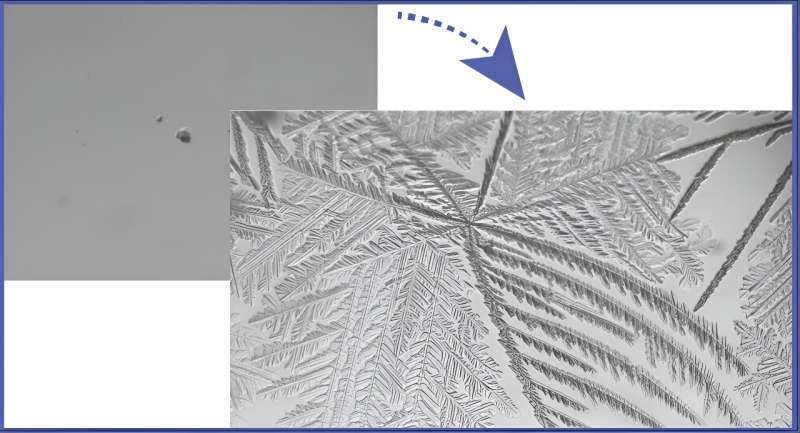This article has been reviewed according to Science X's editorial process and policies. Editors have highlighted the following attributes while ensuring the content's credibility:
fact-checked
peer-reviewed publication
trusted source
proofread
Antifreeze proteins show promise for organ preservation

Cryogenic damage has long presented a significant barrier to effective organ preservation, posing challenges to advancements in transplantation and medical treatments. The formation of ice crystals during freezing can compromise cellular structures, leading to irreversible damage and organ failure.
However, a new study led by Prof. Ido Braslavsky, Dr. Vera Sirotinskaya, and Dr. Liat Bahari from the Faculty of Agriculture, Food and Environment at the Hebrew University, in collaboration with Dr. Victor Yashunsky from Ben Gurion University of the Negev and Dr. Maya Bar Dolev from Technion, has unveiled a promising solution. The study is published in the journal Langmuir.
Cryogenic damage significantly impacts the potential success of organ preservation, affecting thousands of people worldwide who are in need of organ transplants. Each year, millions of individuals are diagnosed with conditions that could be treated with organ transplants, yet the shortage of viable, preserved organs leaves many on long waiting lists.
The inability to effectively preserve organs for extended periods means that a substantial number of organs are discarded due to damage from ice crystal formation and other cryogenic effects. This not only limits the number of transplants that can be performed but also exacerbates the shortage, ultimately impacting the health and survival of countless patients who depend on these lifesaving procedures.
Building on the foundation of previous research into ice-binding proteins (IBPs), this study demonstrates how the strategic use of antifreeze proteins (AFPs) can mitigate cryogenic damage and revolutionize organ freezing techniques.
Utilizing a state-of-the-art microscope stage capable of precise temperature control and rapid cooling at a rate of 100 degrees Celsius per second, the study compared samples containing antifreeze proteins to those without. Through the strategic deployment of different types of antifreeze proteins, such as AFPIII from fish and TmAFP from larvae of flour beetles, the research team successfully delayed crystallization and influenced devitrification even at temperatures below -80 degrees Celsius.
"The findings of our research mark a significant step forward in organ preservation technology," explained Dr. Bar Dolev. "By inhibiting crystallization and crystal growth, antifreeze proteins hold immense promise for extending the viability of frozen organs and enabling previously impossible transplants."
Prof. Braslavsky further emphasized the potential impact of this breakthrough, "This advancement opens doors to a new era in tissue preservation and organ transplantation. With further development, we envision longer preservation periods, enhanced quality during transport, and innovative transplant procedures, including complex organ combinations like heart-lung transplants and uterine tissue transplants."
The implications of this research are profound, offering hope for improved organ availability, extended preservation windows, and ultimately, saving countless lives. As the field of tissue preservation embraces the potential of antifreeze proteins, the future of organ transplantation shines brighter than ever before.
More information: Vera Sirotinskaya et al, Extended Temperature Range of the Ice-Binding Protein Activity, Langmuir (2024). DOI: 10.1021/acs.langmuir.3c03710
Journal information: Langmuir
Provided by Hebrew University of Jerusalem





















